UPDATE: As another librarian pointed out, flannelboards can be considered fair use, but making coloring sheets of a individual’s art would be considered a “derivative work” and probably infringing on copyright, depending on the situation. So what I’ve actually done is gone out of my way to contact the authors of the two books I used for this post, Steven Savage and Sarah Aspinall, and asked them for permission to hand out coloring sheets for my library. They both agreed…THAT DAY!! It was insanely easy to contact them and I feel most illustrators will be okay with you using their work for educational purposes. BUT it’s important to protect yourself and contact the illustrator first. Don’t contact the publisher, you’ll get caught up in red tape and will most likely receive a no. Find the illustrator and explain the situation. They’ll most likely be happy to help you out!!
Anyway, back to the original article:
This is something I wish I would have started doing right away, but it’s a great way to save your flannelboard patterns that you’ve spent WAY too much time on, and make them practical to use over and over again. I learned the basics of making flannelboards from Storytime Katie back in the day; she came in for a workshop I did and handed out print outs of duck clipart and some flannel to make a “Five Little Ducks” flannelboard. Around this time I started making coloring sheets of book covers that kids liked like Pete the Cat. It wasn’t until recently I discovered I could be saving A LOT of time by doing both at the SAME TIME!!
So I’m going to walk you through my process and maybe you can integrate it into yours. When I want to do a flannelboard directly from a book, I have a few options I try. We’re going to use “Supertruck” for this example.

When finding a pattern, I first I try to find the image online of what I’m looking for. No need to invent the wheel if it’s already been done and it’s out there. Wheels are really hard to make it turns out.
If it’s not that easy (and it never is) I try tracing the image off of the cover. If it’s a nice big image like “Supertruck” it’s going to make a great pattern.
Last option is taking pictures. Grab an iPad, and take a picture of what you want to flannelize. Blow it up and print it out. It might not look pretty, but it’s a great way to get a pattern that’s impossible to find otherwise.
So I go from there!! I sketch it out or trace it in the center of my paper, finalize the details, then make a bunch of copies. I cut out each little detail for my flannel.
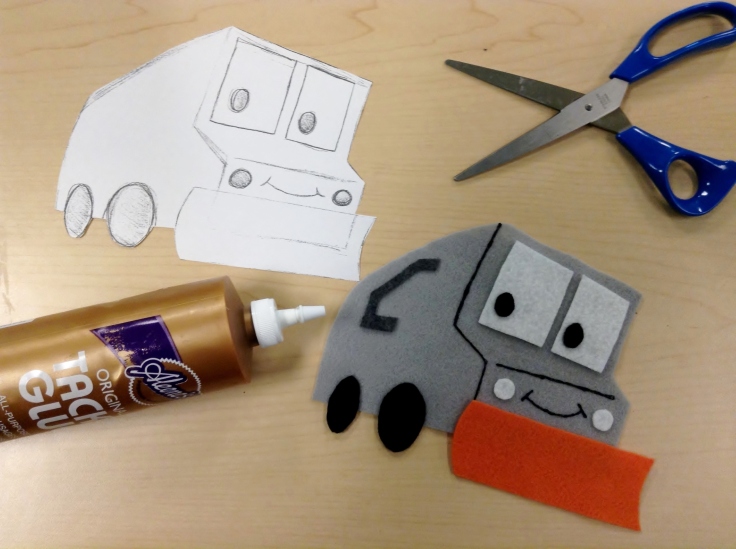
So that part is done. Now time to turn this into a coloring sheet. Take sharpie and trace over all those lines. Erase any extra pencil markings. You may be able to leave it just like this if it’s big enough and takes up most the paper, but you might want to add some background for your character to hang out in. For my “Supertruck” coloring sheet, I was able to add some of the buildings from the cover; they don’t match perfectly but that’s okay, kids will be too busy coloring to notice the small differences.
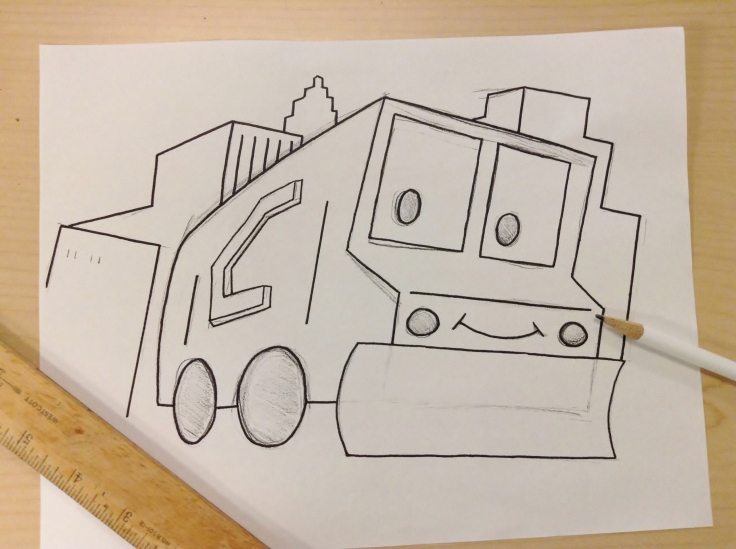
Once your done with that part, sharpie all the lines and erase the extra pencil marks. Scan it, save it, and print it. I usually go into a photo editing program to fix any small mistakes and make the black lines pop a bit by playing with the contrast.

Here’s another recent example with “Penguins Love Colors.”
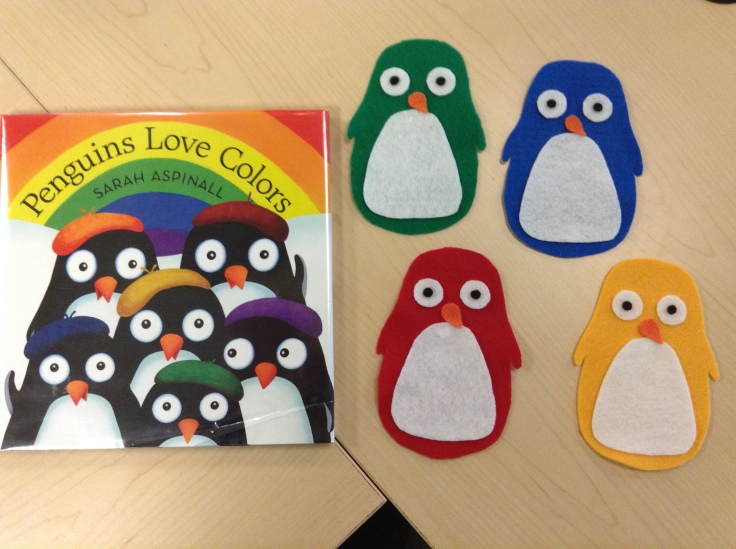
First, I took a photo of a penguin from the book I really liked. Printed it and cut it out to make a stencil (it looks like a weird Two-Face penguin because I was trying to make it symmetrical.) Then I printed out some extra copies to make stencils of the the extra parts like the belly and the beak. A quarter is great for eyes.

So now that I have my penguins made, I’m going to save my pattern by making it into a coloring sheet. I started by making one big penguin in the middle unaltered and the exact same size; all I had to do was trace the stencil I just made. I traced in two buddies to make it more interesting.
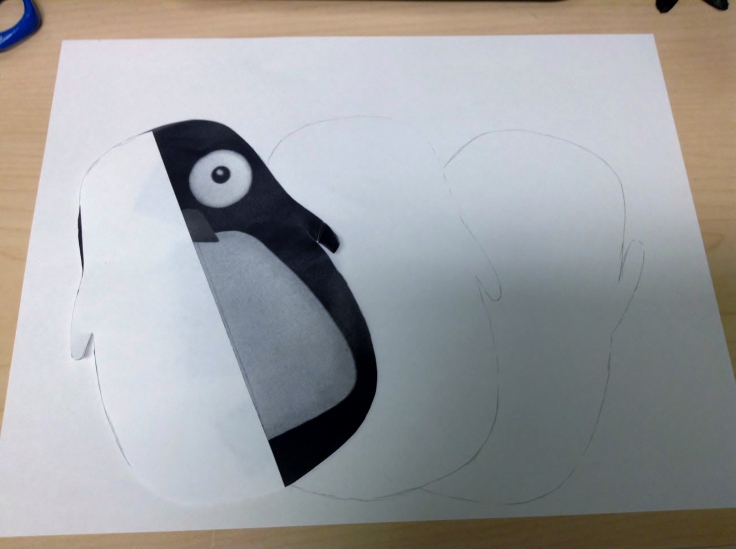
Then I added some details I didn’t include in my pattern, like the hats and a paintbrush. Sorry the photo turned out so dark.
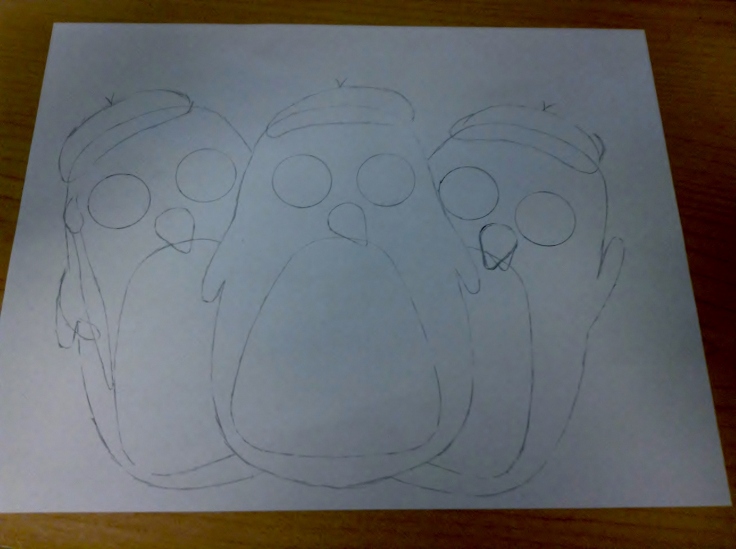
I sharpied all the lines, erased all the pencil marks, then scanned it and saved a digital copy.
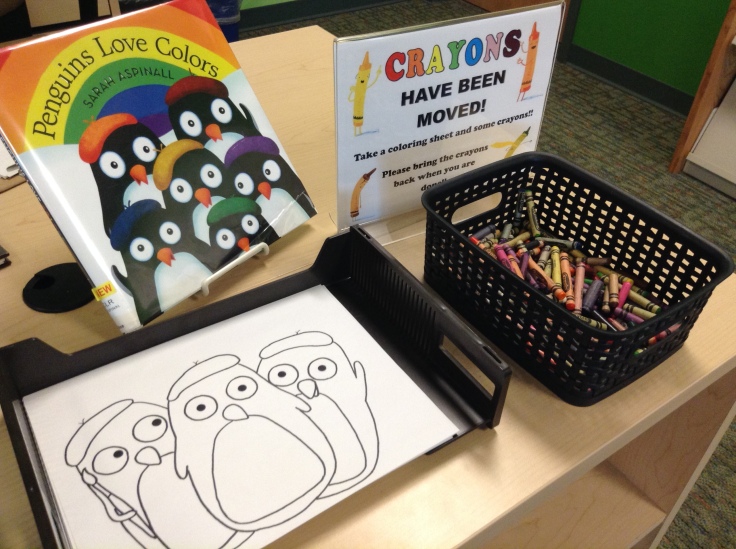
That’s it!! With only a little extra effort, you now have a multipurpose copy of your pattern that kids will be using for years to come. It will definitely make a great craft to accompany your storytime. But more importantly, in the event something awful happens to your flannel, your pattern is right there, ready to go.
All blog entries are for educational or personal use. Please credit the original author if reblogging or posting ideas originally found on this site. LEGO® is a trademark of the LEGO Group of companies which does not sponsor, authorize or endorse this site.


Adding an additional tip that may or may not help:
When making the initial pencil sketch use a light blue colored pencil. Unless you do heavy lines then you won’t have to mess with erasing it – it won’t show up on the copy. Yay!
And I absolutely love your tips – thank you for sharing.
LikeLike
Ooh good idea! Thanks.
LikeLiked by 1 person
I think this is nowhere near fair use and is definitely a copyright violation. You might not be distributing the patterns digitally, but you are distributing the image. And you are distributing the “hack” digitally which could potentially get you and your library in legal hot water. This is very, very different from a feltboard, which is used by you as an individual.
As an example, when adult librarians do coloring programs (for example Color your way to Calm at MPL’s Tippecanoe Branch, they had to purchase copies of a coloring book and cut out pages for patrons to use because it is illegal to make copies and distribute them. It’s also similar when librarians are constructing a story walk. It is illegal to copy and reproduce the book, thus they have to buy multiple copies of the book in order to mount them.
LikeLike
I feel you’re right Allie after some consideration. I’ve updated this post to encourage people to seek permission from the illustrators for the use of coloring sheets. THANKS!
LikeLike